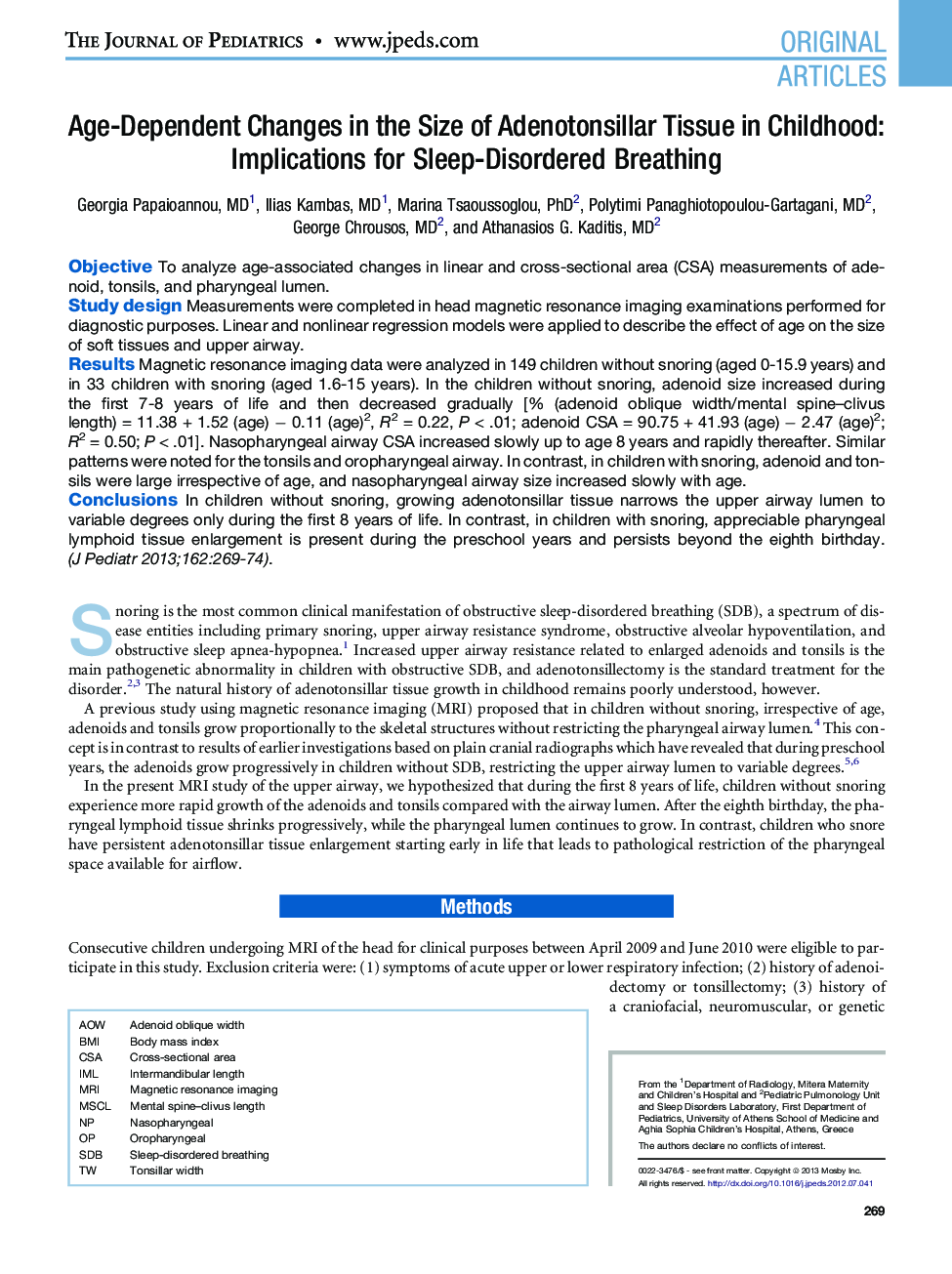| Article ID | Journal | Published Year | Pages | File Type |
|---|---|---|---|---|
| 6223838 | The Journal of Pediatrics | 2013 | 10 Pages |
ObjectiveTo analyze age-associated changes in linear and cross-sectional area (CSA) measurements of adenoid, tonsils, and pharyngeal lumen.Study designMeasurements were completed in head magnetic resonance imaging examinations performed for diagnostic purposes. Linear and nonlinear regression models were applied to describe the effect of age on the size of soft tissues and upper airway.ResultsMagnetic resonance imaging data were analyzed in 149 children without snoring (aged 0-15.9 years) and in 33 children with snoring (aged 1.6-15 years). In the children without snoring, adenoid size increased during the first 7-8 years of life and then decreased gradually [% (adenoid oblique width/mental spine-clivus length) = 11.38 + 1.52 (age) â 0.11 (age)2, R2 = 0.22, P < .01; adenoid CSA = 90.75 + 41.93 (age) â 2.47 (age)2; R2 = 0.50; P < .01]. Nasopharyngeal airway CSA increased slowly up to age 8 years and rapidly thereafter. Similar patterns were noted for the tonsils and oropharyngeal airway. In contrast, in children with snoring, adenoid and tonsils were large irrespective of age, and nasopharyngeal airway size increased slowly with age.ConclusionsIn children without snoring, growing adenotonsillar tissue narrows the upper airway lumen to variable degrees only during the first 8 years of life. In contrast, in children with snoring, appreciable pharyngeal lymphoid tissue enlargement is present during the preschool years and persists beyond the eighth birthday.
